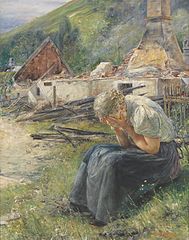Deborah J. Ross's Blog, page 49
June 12, 2020
Short Book Reviews: A Train Robbery, a Russian Wizard, and a Hired Gun
A Longer Fall, by Charlaine Harris (Saga)
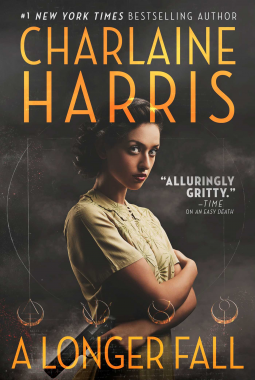
An alternate 1920s American South, complete with racial tensions, railroad travel, and conventional roles for women, forms the backdrop for this delicious mystery/thriller/urban-fantasy/romance in true Charlaine Harris style.
Lizbeth Rose is a gunnie, a hired gun, and she’s part of a crew who have been employed to transport a mysterious, crated object and in the process prevent anyone from stealing it. Their method of transportation is railroad, and it comes as no surprise that the train is sabotaged, resulting in much bloodshed, and in the wreckage that follows, the leader of the crew, badly wounded but holding on to the box, is murdered.
Lizbeth teams up with an old flame, Eli Savarov, a magic-wielding “grigori” wizard otherwise in service to the Holy Russian Empire. They’re forced to remain in the town of Sally, Louisiana, until the box is recovered and the mystery solved. Step by step, they are drawn deeper into the layers of oppression, from the social pressure on Lizbeth to dress and behave like a submissive woman to the casual lynching of blacks.
The first person narrative echoes the “Sookie Stackhouse” novels in tone and diction, but that is part of their charm. Both Lizbeth and Sookie convey savvy, sass, and depth of emotion in deceptively simple language. They’re not the same character, however, and neither are they the author, who demonstrates her deep understanding of Southern American culture with all its shadows and strengths.
A fast-paced, engaging read with quirky world-building and compelling characters that left me hungry for the next installment.

An alternate 1920s American South, complete with racial tensions, railroad travel, and conventional roles for women, forms the backdrop for this delicious mystery/thriller/urban-fantasy/romance in true Charlaine Harris style.
Lizbeth Rose is a gunnie, a hired gun, and she’s part of a crew who have been employed to transport a mysterious, crated object and in the process prevent anyone from stealing it. Their method of transportation is railroad, and it comes as no surprise that the train is sabotaged, resulting in much bloodshed, and in the wreckage that follows, the leader of the crew, badly wounded but holding on to the box, is murdered.
Lizbeth teams up with an old flame, Eli Savarov, a magic-wielding “grigori” wizard otherwise in service to the Holy Russian Empire. They’re forced to remain in the town of Sally, Louisiana, until the box is recovered and the mystery solved. Step by step, they are drawn deeper into the layers of oppression, from the social pressure on Lizbeth to dress and behave like a submissive woman to the casual lynching of blacks.
The first person narrative echoes the “Sookie Stackhouse” novels in tone and diction, but that is part of their charm. Both Lizbeth and Sookie convey savvy, sass, and depth of emotion in deceptively simple language. They’re not the same character, however, and neither are they the author, who demonstrates her deep understanding of Southern American culture with all its shadows and strengths.
A fast-paced, engaging read with quirky world-building and compelling characters that left me hungry for the next installment.

Published on June 12, 2020 01:00
June 8, 2020
Horses in The Seven-Petaled Shield
 Scythian gold comb
Scythian gold combThe stories that gave rise to The Seven-Petaled Shield began with my love of horses and a special exhibit at the Natural History Museum of Los Angeles County of the art of the nomads of the Eurasian steppe. I marveled at the beautiful gold artifacts of the Scythians, depicting horses, elk, and snow leopards, and the lives and adventures of these people. The Greek historian Herodotus described the Scythians as “invincible and inaccessible,” and Thucydides asserted, “there is none which can make a stand against the Scythians if they all act in concert.” This world, its people, and its marvelous horses practically begged for stories to be written about them.
The Scythians were only one of many nomadic horse-faring peoples who roamed the Central Asian steppe from the beginning of the first millennium before the Common Era into the 20th Century. Sarmatians, Cimmerians, Massagetae, Alani, and many others were followed by such groups as the Hun, Kazars, Uzbeks, Bulgars, and Magyars. Although these peoples differed in culture, language, religion, and place of origin, they shared the characteristics of nomadic horse folk. They were highly mobile, superb archers, and their survival depended on their horses.
 Mongolian carvingI based the Azkhantian horses on those used by these historical peoples. Typically, their horses were small and hardy, not particularly beautiful but capable of great endurance. Some sources compared them to “primitive” types like Przewalski's Horse. As I developed the Azkhantian culture more, I delved into the literature about Mongolian horses. I wanted a breed that could withstand extremes of weather, thrive on poor food and scarce water, and able to cover great distances, equivalent to or exceeding modern endurance races. Although the 20th Century brought many changes to Mongolia itself, I found photographic records and journals from travelers who visited this area before or shortly following World War I, when mechanized technology had made few if any inroads into the steppe. The Long Riders Press has reprinted a number of these travel journals, in particular Mongolian Adventure: 1920s Danger and Escape Among the Mounted Nomads of Central Asia. Henning Haslund’s tales of his travels through pre-industrialized Mongolia provided not only descriptions of the peoples, landscapes, animals, and traditions, but examples of the poetry and songs, the latter with staff notation. “The Horse With the Velvet Back” and “The Dear Little Golden Horse” are examples of the importance of horses in this culture.
Mongolian carvingI based the Azkhantian horses on those used by these historical peoples. Typically, their horses were small and hardy, not particularly beautiful but capable of great endurance. Some sources compared them to “primitive” types like Przewalski's Horse. As I developed the Azkhantian culture more, I delved into the literature about Mongolian horses. I wanted a breed that could withstand extremes of weather, thrive on poor food and scarce water, and able to cover great distances, equivalent to or exceeding modern endurance races. Although the 20th Century brought many changes to Mongolia itself, I found photographic records and journals from travelers who visited this area before or shortly following World War I, when mechanized technology had made few if any inroads into the steppe. The Long Riders Press has reprinted a number of these travel journals, in particular Mongolian Adventure: 1920s Danger and Escape Among the Mounted Nomads of Central Asia. Henning Haslund’s tales of his travels through pre-industrialized Mongolia provided not only descriptions of the peoples, landscapes, animals, and traditions, but examples of the poetry and songs, the latter with staff notation. “The Horse With the Velvet Back” and “The Dear Little Golden Horse” are examples of the importance of horses in this culture.  Mongolian horsesHaslund wrote: “Most Mongolian horses are finely built, but the animals from the mountain districts often remind one of the Ardennes horses on a smaller scale. The average Mongolian horse stands barely fourteen hands, but what it can do on long journeys is unparalleled. … My new horse was … small but powerful, and had such control over his legs that he always set them with precision in the right place. If he snorted and refused to go forward, it always turned out that he was standing on the edge of a place where there was a risk of slipping.”
Mongolian horsesHaslund wrote: “Most Mongolian horses are finely built, but the animals from the mountain districts often remind one of the Ardennes horses on a smaller scale. The average Mongolian horse stands barely fourteen hands, but what it can do on long journeys is unparalleled. … My new horse was … small but powerful, and had such control over his legs that he always set them with precision in the right place. If he snorted and refused to go forward, it always turned out that he was standing on the edge of a place where there was a risk of slipping.”Shannivar’s favorite horse, Eriu, was modeled on Haslund’s description. Here she races her cousin, Alsanobal:
Alsanobal gave the red his head, and they raced back the way they had come. Shannivar tapped Eriu with her heels. The black gathered his hindquarters under him, then burst into a full-out gallop. The coarse hairs of his mane whipped across Shannivar’s face. She leaned over his forequarters, secretly pleased that they would have their race after all.
Eriu’s speed was like fire, like silk, as intoxicating as k’th. Even on the rough downhill footing, he never missed a step. The air itself sustained him.
By day, you are my wings, the poet sang to his favorite steed. By night, you never fail me.
They plunged downhill, caught Alsanobal on his red, and passed them. Shannivar whooped in triumph.
I based the Azkhantian horses on the Mongolian breeds, for their hardiness and endurance, their weather-sense and nimbleness. Given the extent of the inhabited steppe, it made sense to me that there would be variation among the types of horses, not just of conformation and temperament, but the same sorts of characteristics that mark the difference between breeds. I introduced two particular variations: tundra horses and gaited horses. The Tundra Horse was a strain of “primitive” horse (like Przewalski’s Horse) living in the Arctic Circle, sighted as late as the mid 1960s (in northeastern Siberia). The Yakut pony has the same geographical distribution and is able to survive extremely severe climactic conditions. So I mounted the northernmost of the Azkhantian tribes on these shaggy white horses.
I became interested in “gaited” horses through a dear friend, a lover of Tennessee Walking Horses. All horses have gaits (walk, trot, canter, gallop) but some are capable of ambling, a four-beat, extremely smooth and often rapid pattern of movement. These are genetically linked (it’s a mutation on the gene DMRT3), the way the propensity to either trot (front and hind feet move alternately) or pace (front and hind feet move together) is. When I began to research gaited breeds, I realized that the special smooth gaits were actually a group of distinct patterns, and that some version of a soft-stepping horse can be found throughout the world, from the Peruvian Paso to the Missouri Fox Trotter, the Icelandic horse, the Indian Marwari, German Aegidienberger, and Greek Messara ponies.
Just as people are not uniform in language, customs, food, or many other aspects, neither are animals or Asiatic wild ass (Equus hemionus). In our own history, doubt remains whether onagers were ever
 domesticated, being thought too “unruly.” I thought a strong, hardy, intelligent equine – quite amenable to training, for this is a fantasy world -- might provide a reasonable alternative to the horse.
domesticated, being thought too “unruly.” I thought a strong, hardy, intelligent equine – quite amenable to training, for this is a fantasy world -- might provide a reasonable alternative to the horse. The Gelon “stone-dwellers,” to the southwest of the steppe, would not use the same type of animal. Gelon was originally loosely based on the Roman Empire, with an Italian climate – much warmer and wetter than the steppe. I decided to not stick with horses, but to explore parallel agricultural evolution and use historical precedent in giving the Gelon a strong preferences for the onager.
The carving of the Mongolian horse is by Taylor Weidman/The Vanishing Cultures Project and licensed under Creative Commons. The photo of the grazing Mongolian horses is by Brücke-Osteuropa and is in the public domain. The image of the onager is in the public domain.

Published on June 08, 2020 01:00
June 6, 2020
Saturday's Moment
Tzedek, tzedek tirdof / צֶ֥דֶק צֶ֖דֶק תִּרְדֹּ֑ף
Justice, justice thou shalt pursue.
-- Deuteronomy 16:20

Published on June 06, 2020 01:00
June 5, 2020
Short Book Reviews: Librarians as Feminist Revolutionaries
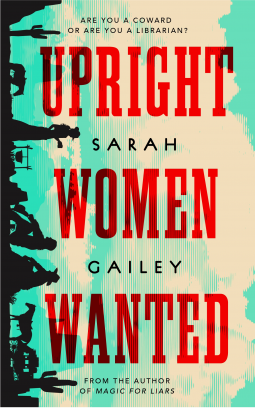 Upright Women Wanted, by Sarah Gailey (Tor.com)
Upright Women Wanted, by Sarah Gailey (Tor.com)In a post-collapse eternally-at-war America, most States are rigidly controlled, with traveling women Librarians bringing only Approved Materials to small communities.
Conventionally rigid “virtue,” subservience to male authority, and suppression of free thought are the rule in Esther’s world. Just before the start of the story, she has fallen in love with another teen girl, their affair has been discovered, and her lover has been hanged. Only the power and political standing of her father has saved Esther’s life. So she does the only reasonable thing: she runs away to join the Librarians. Who are not at all the conventional, convention-enforcing women she expected: a lesbian couple and a third, who presents as female in public but wears trousers and insists on “they” in private. To say this blows up Esther’s preconceptions and challenges her guilt for having the “wrong” attractions is putting it mildly.
The core of the story emerges as Esther gains in confidence, rising to face one increasingly dangerous challenge after another. The world is nothing like what she expected, and the only way to gain her own freedom to be fully herself is to fight for the rights of others to do the same.
A satisfying ending concludes this thoughtful page-turner.

Published on June 05, 2020 01:00
June 2, 2020
Today's Words of Sorrow
Published on June 02, 2020 01:00
June 1, 2020
[personal silliness] On The Size of Ears
 Some people agonize over the size and shape of their ears. Babies don't care, but kids who have unusually shaped ears or ears that stick out can (and are!) made to feel self-conscious about them. People even have surgery to flatten ears against the skull, or I assume their parents do. I never thought about ears -- my own or those of my friends -- when I was a kid.
Some people agonize over the size and shape of their ears. Babies don't care, but kids who have unusually shaped ears or ears that stick out can (and are!) made to feel self-conscious about them. People even have surgery to flatten ears against the skull, or I assume their parents do. I never thought about ears -- my own or those of my friends -- when I was a kid.So it came as a surprise to me when I was an adult that my mother was self-conscious about the size of her ears. The outer ear is mostly cartilage, which continues to grow -- albeit slowly -- throughout your life. Older folks generally have bigger ears than youngsters. I suppose the self-consciousness came from "my ears show my age," but I never asked her. I just observed the lengths she went to in styling her hair in order to cover part of her ears.
 It also came as surprise to me as I achieved senior citizen status myself that my own ears were not as I remembered them. They looked like my mother's ears. They're neither pretty nor ugly. They're bigger than when I was a child (I think -- I'm relying on old photos here) and somewhat longer top to bottom. There's a funny crease in the skin of the lobes that I assume is due to decades of wearing pierced earrings. But maybe not. It might have done that, anyway.
It also came as surprise to me as I achieved senior citizen status myself that my own ears were not as I remembered them. They looked like my mother's ears. They're neither pretty nor ugly. They're bigger than when I was a child (I think -- I'm relying on old photos here) and somewhat longer top to bottom. There's a funny crease in the skin of the lobes that I assume is due to decades of wearing pierced earrings. But maybe not. It might have done that, anyway.Mostly I think it's cool that my ears look like my mother's when she was my age. Sometimes it's puzzling that a body part up and changes itself, but that seems to be happening to more than my ears. Every once in a while, though, it bothers me. I have discovered a solution:
I don't look in the mirror.
From the inside, my ears feel just fine. And then I think of the images of the Buddha with long, long ears. And I giggle.
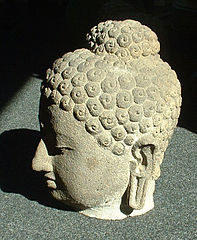

Published on June 01, 2020 01:00
May 29, 2020
Short Book Reviews: Liszt and the Whitechapel Murders
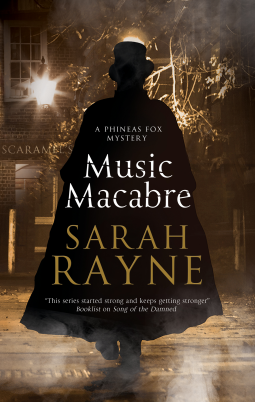 Music Macabre, by Sarah Rayne (Severn House)
Music Macabre, by Sarah Rayne (Severn House)This thriller, set in parallel time lines in modern and Victorian-era London, weaves together the legend of the serial killer, Jack the Ripper, and the music of Franz Liszt. In today’s time, writer Phineas Fox is researching his next project, a scholarly work on the life of Liszt, when he comes across a reference to “Liszten for the Killer,” a song that the women of Whitechapel used as an alarm signal.
The Victorian story line includes the notorious music hall dancer, Scaramel, and the poor girl, Dairy, whom she befriends. As the Ripper’s attacks grow nearer, Daisy and her younger brother barely escape his knives. Scaramel devises a scheme to use a melody composed by Liszt’s, as distinctive as it is haunting, as a way to rapidly spread word of his approach. Meanwhile, Phineas’s researches bring him to the physical location of the older story’s events. Many of the same buildings are still in existence, including the pub where Scaramel and her group met; in gaining access to the documents stored in the basement, he encounters the new owner, who has a secret family history and obsession of her own.
Music Macabre added something quite new and fresh for me to the usual tales of Jack the Ripper. Initially my curiosity was piqued by the use of Liszt’s music as a plot element. That in itself set the book apart (and as an adult piano student, I have Opinions about Liszt’s compositions for a pianist with relatively small hands). Both story lines drew me in, and as the parallel tales progressed, echoing and crossing one another, the tension rocketed up. The thriller elements were handled with seeming effortlessness, allowing deeper nuances to emerge. Sympathetic characters, a burgeoning sense of doom, and unexpected twists added to the reading enjoyment.
Now, where’s that playlist?

Published on May 29, 2020 01:00
May 25, 2020
Cross Training For Writers
 Cross-training is a concept I snagged from athletics. It's a way of improving fitness for one particular sport (or art) by practicing another. The idea is that the body adapts to repetitive exercises and, by becoming more efficient, shows slower progress.
Cross-training is a concept I snagged from athletics. It's a way of improving fitness for one particular sport (or art) by practicing another. The idea is that the body adapts to repetitive exercises and, by becoming more efficient, shows slower progress.Over the years, I've noticed that if I'm stuck on a story and can't figure out how to even think my way toward a solution, one of the most helpful things I can do is to listen to other storytellers talk about their work. In particular, I'd put on one of those bonus material discs from a favorite movie and listen to directors and screenplay writers discuss their approaches. (My favorites are Peter Jackson, Fran Walsh, and Philippa Boyens talking about how they adapted The Lord of the Rings into film, how they decided what to leave out, what to expand or re-arrange, that sort of thing; because I know the books so well, I can follow their interpretive process.) I come away re-charged because the story-telling is similar enough and yet different enough from what I do in prose. I've also gotten much good perspective from books on screenplay writing for much the same reason. I don't want to write a script for a movie or a play, but I do benefit from that particular way of looking at story, character, dialog, and action.
I find, though, that this strategy is more useful for "getting-unstuck" than for "general writerly health." I am a fiction writer -- I deal in prose, not script, not poetry (although I greatly admire people who can do them!) I'm struck by how many writers I know who have some other areas of creativity in their lives. Music springs immediately to mind, how many writers I know who also sing or play an instrument, many of them at quite a high level of proficiency. I suspect the same is true for painting, for knitting, for cooking . . .
I've been studying piano for about 12 years now. It's my first formal music training, although I sat through about a gazillion lessons with each of my two children (the rule was, you begin at 5 and keep studying as long as you live at home). Finally it was my turn. There's a special joy in being an adult student, already appreciating the importance of repetition, analysis, lyricism; being able to choose music I love, whether it's in the standard repertoire or not; being very clear that this is for my own pleasure. I'm currently in the midst of a love affair with the French Impressionists.
I don't know why I should have been surprised when music lessons started having an amazing effect on my writing. I conceptualized this that playing the piano and reading staff notation was forcing my brain to work in a different way, but I think it's more than that. As I learn a piece, I go on a journey inside the structure of the music. Music isn't just isolated notes, any more than writing is isolated letters. It's movement and interaction, harmony and dissonance, rising and falling tension. This is especially true for "narrative" music. (I have no idea if that's a technical term, but it's one that makes sense to me.) I get to immerse myself in a very different form of "story-ness," one completely without words, one that exists only in the moment and in my memory. Writing's like that -- the ideas and images are flashes of electricity and squirts of neurochemicals in my brain, evanescent -- and then I capture them. Well, I make an approximation of turning them into a form that endures over a somewhat longer time.
None of this translates directly into better writing. What it does is push my mind in different directions. It's like creativity yoga. The bonus is that besides "improved overall conditioning," I come away with new experiences as well, so expect music to play a greater role in my work as time goes on!

Published on May 25, 2020 01:00
May 23, 2020
New (Free) Chapter of Jaydium on Curious Fictions
The next chapter of Jaydium is up on Curious Fictions, and it's free (all the previous chapters are, too). If you love the story, the entire ebook is only $0.99 right now from all the usual vendors. (And subscribing to my Curious Fictions page for a small amount per month would be lovely, too.)
Jaydium, Chapter 4By Deborah J. Ross
May 22, 2020 · 3,238 words · 12 minutes LIKE BOOKMARK Art by Vincent Di Fate. Edit Art · Remove ArtFrom the author: Far in the future, an interplanetary civil conflict has ground to an uneasy halt. Kithri, abandoned on a desolate mining planet, meets Eril, shell-shocked pilot. A freak accident sends them back to a time when their desert world was lush and green, when an alien civilization stands on the brink of a war of total destruction. They must choose to remain outside the conflict or to stand up for what they believe.
Art by Vincent Di Fate. Edit Art · Remove ArtFrom the author: Far in the future, an interplanetary civil conflict has ground to an uneasy halt. Kithri, abandoned on a desolate mining planet, meets Eril, shell-shocked pilot. A freak accident sends them back to a time when their desert world was lush and green, when an alien civilization stands on the brink of a war of total destruction. They must choose to remain outside the conflict or to stand up for what they believe.
Jaydium, Chapter 4By Deborah J. Ross
May 22, 2020 · 3,238 words · 12 minutes LIKE BOOKMARK
 Art by Vincent Di Fate. Edit Art · Remove ArtFrom the author: Far in the future, an interplanetary civil conflict has ground to an uneasy halt. Kithri, abandoned on a desolate mining planet, meets Eril, shell-shocked pilot. A freak accident sends them back to a time when their desert world was lush and green, when an alien civilization stands on the brink of a war of total destruction. They must choose to remain outside the conflict or to stand up for what they believe.
Art by Vincent Di Fate. Edit Art · Remove ArtFrom the author: Far in the future, an interplanetary civil conflict has ground to an uneasy halt. Kithri, abandoned on a desolate mining planet, meets Eril, shell-shocked pilot. A freak accident sends them back to a time when their desert world was lush and green, when an alien civilization stands on the brink of a war of total destruction. They must choose to remain outside the conflict or to stand up for what they believe.
Published on May 23, 2020 01:00
May 22, 2020
Short Book Revews: Murder on the Night Train
 Night Train to Murder, by Simon R. Green (Severn House)
Night Train to Murder, by Simon R. Green (Severn House)Like the murder in a country house, a crime on a train in passage has become a staple of mystery novels. Agatha Christie’s Murder on the Orient Express leaps to mind. The space is confined, as is the number of suspects, and the time in which the detective must identify the culprit is limited.
Author Simon R. Green brings his own inimitable twist to this classic model, beginning with his highly unusual detective, Ishmael Jones – who not only works for a highly secret agency but is himself not exactly human. In fact, not human at all, and bent on keeping that a secret, too. With his charming (human) companion, Penny, he’s been dispatched to protect one of the train passengers, the newly appointed and much disliked Head of the British Psychic Weapons Division. Ismael’s mission is unbeknownst to both the Head, his body guard, his agency, and of course the other passengers. When the Head is found murdered – in the loo (aka rest room) – a true “locked room” mystery if there was one – Ismael and Penny spring into action, questioning everyone, reconstructing the time line, and trying to prevent another murder. Each passenger has their own story, a bit like the characters in Rashomon, and their own secrets that they are desperate to keep hidden.
Green handles all this with a seemingly effortless finesse and attention to character as he guides the story through plot twists and revelations, always “playing fair” with the reader, yet not giving away the surprising resolution until the very end.

Published on May 22, 2020 01:00

